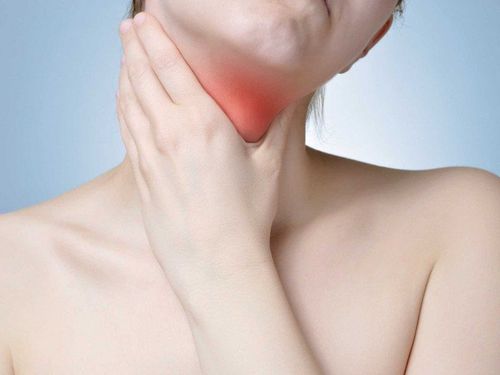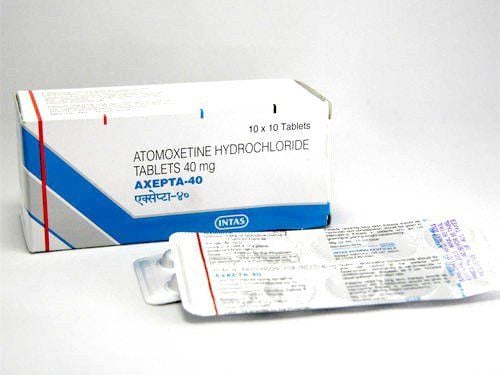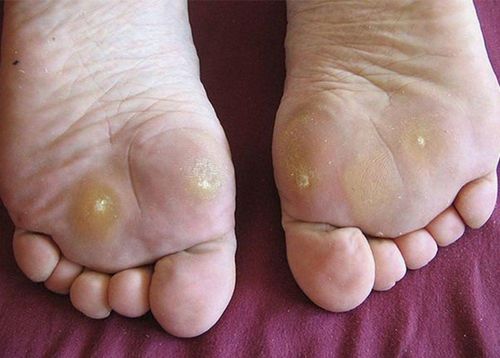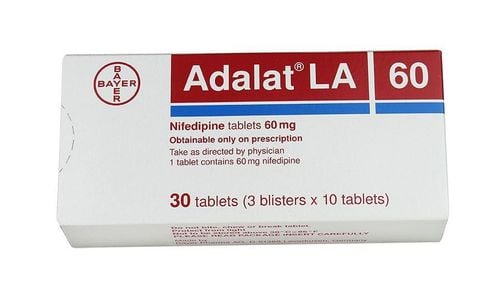This is an automatically translated article.
Diabetes is the most common endocrine disorder, affecting 8.3% of the population. Skin disorders of people with diabetes account for 79.2% of all people with diabetes. People with type 2 diabetes are more likely to develop skin manifestations than people with type 1 diabetes. Skin disease may appear as the first sign of diabetes or may develop at any time during the course of the disease. So what are the skin manifestations of people with diabetes, let's find out through the article below.
1. Diabetic Skin Manifestations Related to Insulin Resistance 1.1 Acanthoma and Diabetic Skin Acanthosis vulgaris is a velvety thickening of the skin folds, hyperpigmentation, mainly in the skin. neck, axillary and inguinal regions, sometimes accompanied by hyperkeratosis. It is present in 74% of adult obese patients and can be used to predict hyperinsulinemia. The presence of acanthosis nigricans is a prognostic indicator of the likelihood of type 2 diabetes. Acanthosis nigricans associated with type 2 diabetes has an insidious onset and is initially characterized by hyperpigmentation and it indicates insulin resistance.
1.2 Acrochordrons and Diabetic Skin Acrochordons (epithelial neoplasia, ependymoma, papilloma) are benign tumors arising from normal skin on a narrow peduncle, usually located on the eyelids, neck, armpits, and groin. , but can sometimes be necrotic. Scientists have found a clear relationship between hyperinsulinemia and acrochordons.
1.3 Diabetic Dermopathy (DD) and Diabetic Dermopathy (DD) is a skin condition characterized by scaly patches of light brown or reddish color, oval or round, slightly recessed and often present most on the shin. Lesions usually heal on their own and disappear within 1-2 years, leaving pigment atrophy at the original site.
1.4 Jaundice and diabetic skin Jaundice rash presents on the buttocks, elbows, and knees, has a sudden onset with yellow nodules against a red background. These lesions can be the first signs on the skin of a person with diabetes. The lesions of the yellow rash tend to resolve on their own within a few weeks.

Hình ảnh da của người bị tiểu đường mắc chứng gai đen
2. Diabetic skin manifestations associated with type 1 diabetes 2.1 Diabetic skin and Necrobiosis Lipoidica Necrobiosis lipoidica (NL) is a rare chronic granulomatous disease of the skin. Typical diabetic skin lesions are most common on the front of the lower legs, often starting as reddish-brown or hairy papules, plaques, or nodules and progressing rapidly to yellow-brown patches, skin atrophy. Lesions may ulcerate on their own or from trauma.
Among NL patients, 11–65% have type 1 diabetes at the time of percutaneous diagnosis, 90% of NL people without diabetes will eventually develop diabetes (mainly diabetes). type 1 diabetes).
2.2 Vitiligo Vitiligo patients have patches of skin and hair that lose pigmentation. A 2009 study reported that over 50 patients with type 1 diabetes 4% of subjects developed vitiligo.
2.3 Diabetic Puffy Diarrhea is found in 0.5% of people with type 1 diabetes, more common in men and those with long-standing peripheral neuropathy. Lesions arise spontaneously and mainly on the back and sides of the legs and feet. Occasionally, also in the arms and hands. Lesions are sterile vesicles ranging in size from a few millimeters to several centimeters on the base of the skin, which are usually non-inflammatory and painless.
Diabetic blisters often appear on the skin of people with diabetes who have had the disease for many years. However, this condition can be the first sign of diabetes. Lesions resolve on their own after 2–5 weeks.
3. Other Skin Diseases Related to Diabetes 3.1 Psoriasis Psoriasis is characterized by red, scaly papules and patches of the skin, often occurring in areas prone to friction, such as the scalp, elbows, knees, hands, feet, trunk and nails. About 9% of people with diabetes (type 1 or type 2) have psoriasis.
3.2 Flat lichen Typical lesion with pruritic papules or patches, purple, polygonal and flat, 2 to 4 mm in diameter, usually symmetrically distributed, in places such as in the folds of the wrists and legs , trunk, glans penis, mucous membranes of the mouth and vagina.
3.3 Diabetic Dry Skin Dry skin is the second most common skin problem among diabetic skin manifestations. Therefore, cleaning and moisturizing the skin is one of the important things to avoid dry skin in diabetic patients.
3.4 Diabetic scleroderma Diabetic scleroderma causes the skin on the back of a person's neck, shoulders, arms, and upper back to become thicker and harder.
Diabetic scleroderma is believed to be a rare disorder of the skin of people with diabetes. This condition tends to occur in people who: are obese, use insulin, have poor blood sugar control, have other diabetes complications.

Bệnh xơ cứng bì tiểu đường được cho là một rối loạn hiếm gặp về da của người bị bệnh tiểu đường
3.5 Diabetic granulomatous granuloma is a benign, chronic skin disease with lesions in the dermis, often without symptoms or sometimes with mild pruritus, painless. Typical form: the basic lesion is papules, nodules arranged in circular chains or centrifugal arcs, often on the backs of hands, feet, elbows, and knees.
3.6 Acquired perforated skin disease Acquired perforated skin disease presents as papules and dome-shaped nodules with hyperkeratosis nodes. Acquired perforation dermatitis is seen on the skin of patients with diabetes in both types 1 and 2. Acquired perforation skin lesions are commonly seen on the upper trunk and extremities and are often accompanied by itching.
3.7 Nail dystrophy Nail dystrophy manifests as excessive thickening and deformity of the nail, which can cause debris buildup and toe infection, and is then treated as a diabetic skin ulcer.
3.8 Periungual vasodilation Periungual vasodilation manifests as periungual erythema, dilated blood vessels visible to the naked eye, painful fingertips and thickened cuticles.
3.9 Candidiasis The skin of people with diabetes is often at higher risk of Candida, especially Candida albicans, than the general population because high blood sugar allows Candida to grow. Manifestations of the disease are red patches with characteristic white sticky discharge and pustules around. In addition, there are some fungal skin diseases that are also common in people with diabetes such as: scalp fungus, nail fungus,...
3.10 Skin infection Skin infection is a skin disease of people with diabetes. quite common and more serious than other skin manifestations.
One of the leading complications of diabetes is diabetic skin ulcers. Due to the high blood sugar concentration, the blood circulation is poor, the blood has high viscosity and high pressure, causing damage to blood vessels and nerves, thereby reducing the ability to regenerate small wounds and reduce sensation. skin, the wound is small, which in turn can progress to a larger and larger diabetic skin ulcer. Foot ulcers are one of the most common types of diabetic skin ulcers. In addition, the high blood sugar creates conditions for bacteria to multiply, leading to white blood cell dysfunction, which aggravates diabetic skin ulcers due to superinfection.
There are many skin manifestations in people with diabetes. Therefore, patients need to pay attention to abnormal symptoms and have regular health check-ups to prevent complications caused by diabetes.
Follow Vinmec International General Hospital website to get more health, nutrition and beauty information to protect the health of yourself and your loved ones in your family.
Please dial HOTLINE for more information or register for an appointment HERE. Download MyVinmec app to make appointments faster and to manage your bookings easily.













